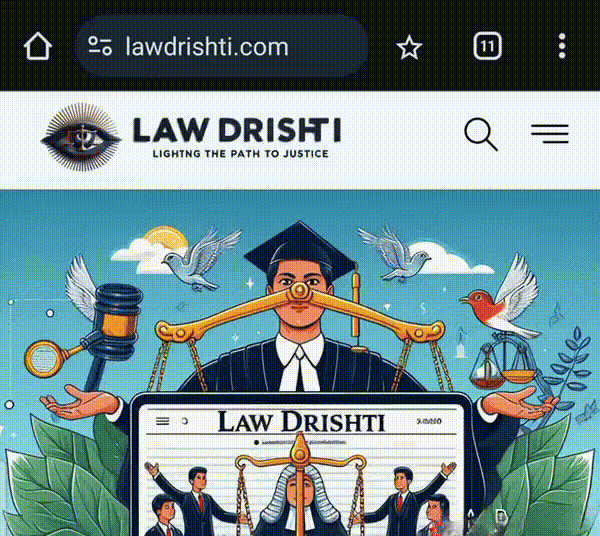About the Organisers
The West Bengal National University of Juridical Sciences (NUJS), established in 1999, is recognized for its academic excellence and commitment to inclusivity, positioning it as one of India’s top law schools. Offering a variety of undergraduate, postgraduate, and doctoral programs, the university is renowned not just for its rigorous legal education but also for creating an accessible environment for all students, including those with disabilities. NUJS has hosted events such as Para-Invicta, a sports festival specifically for specially-abled students, alongside Invicta, its flagship sports festival, emphasizing equal opportunities. Additionally, NUJS organizes a range of Moot Court and Alternative Dispute Resolution (ADR) competitions, like the NUJS-HSF Moot Court Competition and the NUJS ADR Mediation Competition. These platforms provide emerging legal professionals with valuable opportunities to engage with complex legal issues. With its focus on inclusivity and social responsibility, NUJS stands as a leader in accessible legal education.
About the Conclave
The 1st National Disability Rights Conclave, hosted by NUJS Kolkata, is a pioneering initiative designed to foster critical dialogue on the rights, dignity, and inclusion of persons with disabilities (PwDs) within India’s legal framework. The Conclave will bring together judges, legal academics, practitioners, policymakers, and activists to discuss the current state and future trajectory of disability rights law in India.
The Conclave aims to deepen understanding of the Rights of Persons with Disabilities Act, 2016, while addressing the legal, institutional, and societal challenges in its implementation. The event will promote interdisciplinary discussions on key themes such as reasonable accommodation, digital and physical accessibility, and the role of the judiciary in advancing inclusive justice.
Through this Conclave, NUJS aspires to generate actionable insights, encourage empathy-driven legal thinking, and support reform-oriented approaches to disability law. The event will serve as a collaborative platform for stakeholders from various sectors, moving beyond symbolic inclusion toward substantive equality, accessibility, and empowerment.
Who Should Attend?
- Law students and academicians
- Practicing advocates and judicial aspirants
- Disability rights advocates
- Policymakers and government officials
If you are a scholar, legal practitioner, or social reformer, your participation will contribute to a more inclusive legal framework.
Why Attend?
- Engage directly with sitting judges and national experts.
- Learn from real-world challenges in implementing disability law.
- Network with stakeholders driving legal and social change.
- Contribute to policy-relevant dialogues.
Themes of Panel Discussions
- Evolving Jurisprudence of Accessibility in India: Moving from the social model to the CRPD new model.
- Beyond Compliance: Reimagining India’s Disability Rights Framework in light of international legal standards.
Key Areas of Discussion
- Shift from Social to Rights-Based Model
- Judicial Interpretation and Case Law
- CRPD’s Influence and the Road Ahead
- Reasonable Accommodation
- How the Indian Model Can Be Improved?
Speakers of the Conclave (Including but not limited to)
- Sara Hossain: Chair of the Independent International Fact-Finding Mission on Iran, Honorary Executive Director of BLAST, and recipient of the International Woman of Courage Award, 2016.
- Soma Roy Chowdhury: Legal and governance expert with 20+ years of experience in legal aid, human rights, gender justice, and public interest litigation. Former National Program Coordinator for a major UK-funded legal services program.
- Advocate Rahul Bajaj and Advocate Amar Jain: Founders of Mission Accessibility, an NGO advancing the rights of individuals with disabilities.
- Sumit Agarwal: A leading authority on disability law, SDG Ambassador for Diversity, Equity & Inclusion, and DEI Advisor to Fortune 500 companies.
Registration Details
- Participation Fee: ₹249
- Optional Lunch: ₹159 (extra)
Last Date to Register: 17th August 2025
Register Here: https://forms.gle/DomK59wKM5GxsA5A9
Payment Details
- Name: Kinjal Das
- Bank Name: Bandhan Bank
- Branch: Ballygunge
- A/C No.: 50220033592779
- IFSC No.: BDBL0001699
(Online participation is also allowed – please mention preference in the registration form.)
Contact for Queries
- Chair: Kinjal Das – +91 75959 65675
- Deputy Chairs:
- Anushka Maji – +91 86174 78308
- Saarthak Samadder – +91 94330 48880
- Event Heads:
- Serena Sarkar – +91 99032 20206
- Aditya Roy Chowdhury – +91 77381 55002
Email: nationaldisabilitymoot@nujs.edu
Instagram: @nujs_ndlmc
Facebook: Nujs Ndlmc
LinkedIn: NUJS NDLMC





